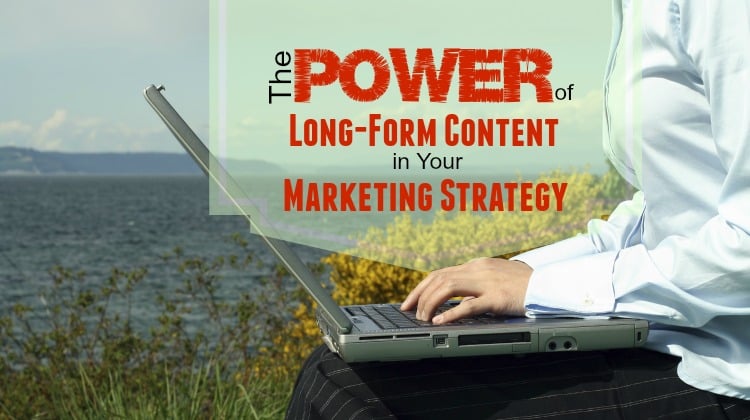
If you’d like to improve your conversion rate, social shares, engagement and search engine rank, consider harnessing the power of long-form content in your marketing strategy.
What is Long-Form Content?
Long-form content, as the name implies, uses lengthy articles as part of a broader, comprehensive content marketing strategy. Typically, an article is considered long form if it contains more than 2,100 words.
That’s a lot of words, but the benefits are outstanding, and the return on investment (ROI) is demonstrable. Simply put, long-form content should be a weapon in your Internet marketing arsenal.
Improved Conversions
There’s an old adage among direct marketers: “The more you tell, the more you sell.” If you’ve ever received a direct mail marketing letter, you’ve probably noticed it was anything but brief. Sometimes, those direct mail advertisements go on for several paragraphs and multiple pages.
Why is that? Because those marketers know that, when it comes to advertising copy, more is merrier. It’s an accepted principle of marketing that long-form copy sells.
KISSmetrics co-founder Neil Patel conducted a study to demonstrate this point on his own website. He performed an A/B test on his home page:
- Some people landing on his page saw short content.
- Other people saw long content.
To the surprise of nobody who’s been involved with marketing for any length of time, he noticed a better conversion rate with people who saw the long sales copy. Not only did he see a 7.6% better conversion rate, but he said he also saw better leads from the people who were exposed to the long-form content.
Social Media Users Love Long-Form Content
Do you want to increase your social signals? If so, then use long-form content to increase the number of links to your site from social media.
Patel also evaluated his own website to determine which articles were being shared the most, based on word count. He divided all of his articles into two groups: articles that were under 1,500 words and articles that were over 1,500 words.
Guess what? The articles that were over 1,500 words in length were shared, on average, more than the articles that were under 1,500 words.
William Shakespeare said brevity is the soul of wit. That may be true, but brevity is not the best content marketing strategy. If you’d like to build your brand, consider adding long-form content marketing to your online initiatives.
Improved Ranking
Long-form content also has the power to improve your ranking with the search engines. That’s because they have an affinity for content that is considered authoritative. Apparently, search engine algorithms measure quality, at least in part, with quantity.
According to a study by SerpIQ, the average content length for a web page that ranks on page 1 of Google is at least 2,000 words. This just goes to show that content really is king. As an added bonus, long-form is generally more promotable. It’s shown that long-form content results in more links which, you guessed it, improves ranking.
Last year, a case study done by WebpageFX demonstrated the effect of long-form content marketing with one of its clients, CJ Pony Parts. WebpageFX was tasked with ranking CJ Pony’s website for a competitive keyword. The company added long-form content to the website in August of 2014. The page ultimately ranked first for the targeted keyword and by October of that same year, traffic had more than doubled.
These companies aren’t the only ones seeing success with long-form content. Nowadays, the most successful marketing strategies include long-form content for the reasons we’ve covered, and more.
Have you had success with long-form as part of your marketing strategy? Let us know in the comments!

